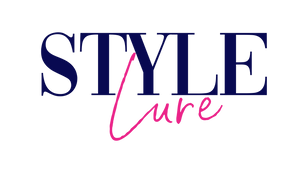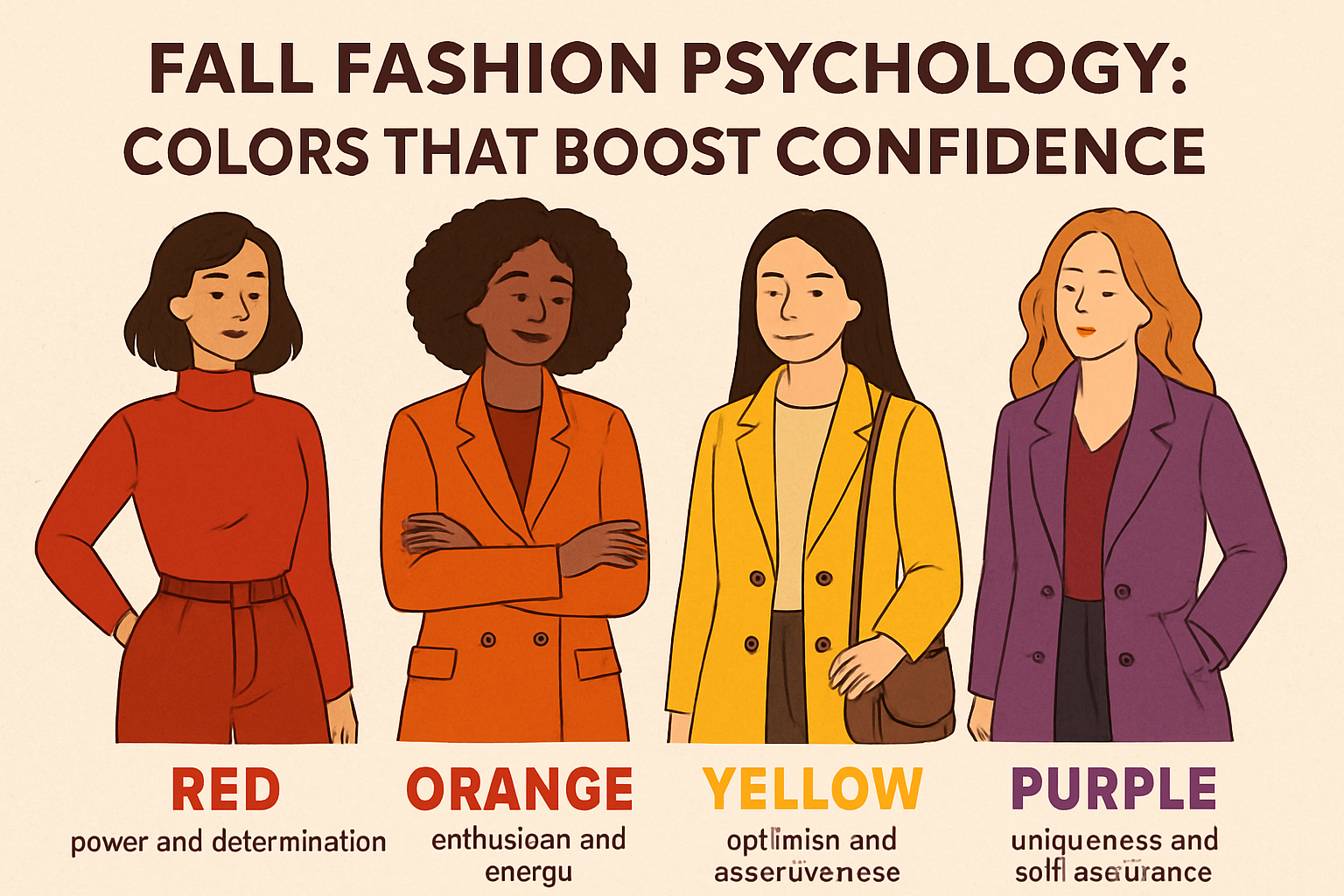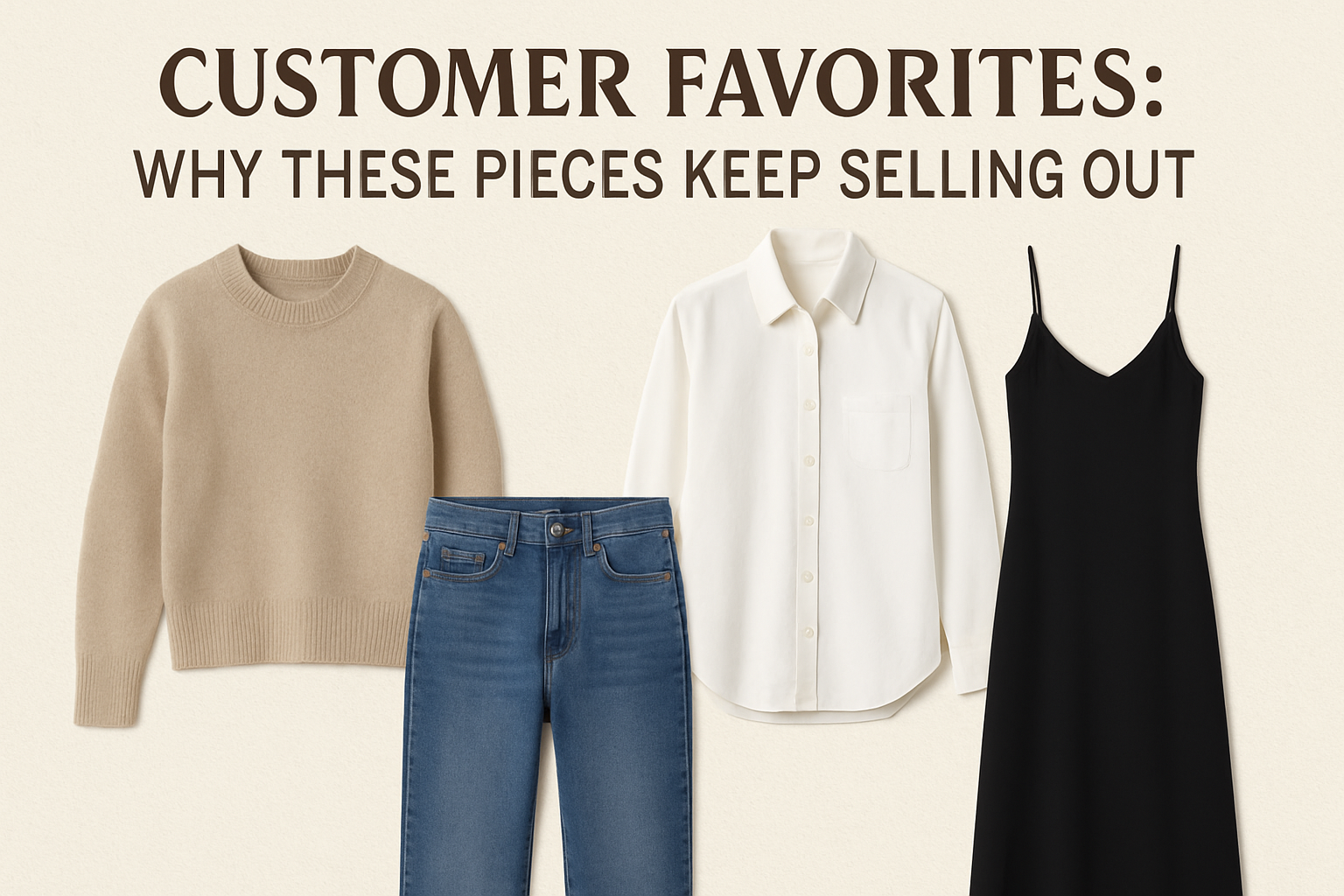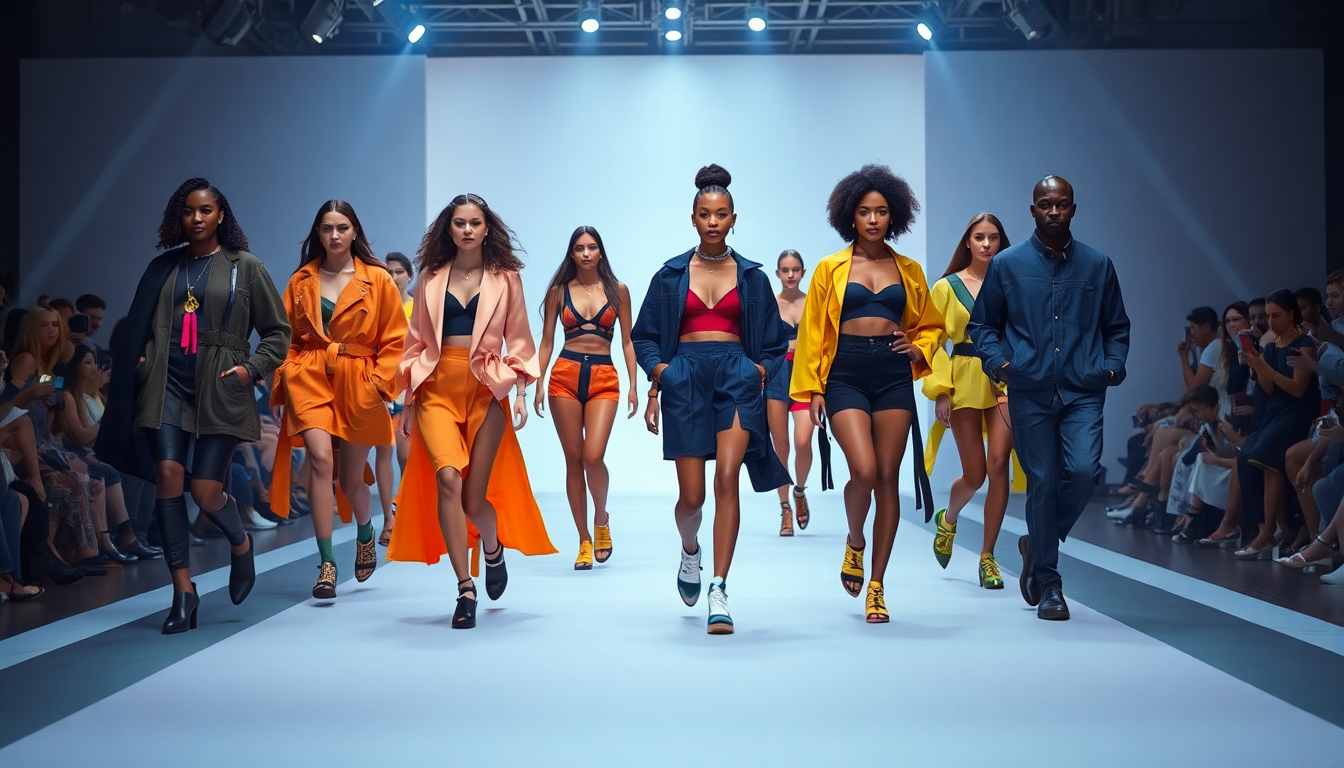The Psychological Impact of Fall Fashion Colors
The autumnal palette possesses an extraordinary psychological potency that transcends mere aesthetic appeal. When we drape ourselves in the rich tapestries of fall hues, we're not simply following seasonal trends—we're engaging in a sophisticated form of chromotherapy that influences our neurochemistry and social presence.
Color psychology operates through complex neurological pathways. Our visual cortex processes chromatic information instantaneously, triggering emotional and physiological responses before conscious thought intervenes. This phenomenon explains why certain fall fashion colors can dramatically elevate confidence levels while others might inadvertently diminish our self-assurance.
Research in environmental psychology demonstrates that warm-toned garments activate the sympathetic nervous system differently than cool tones. The burnished golds, deep burgundies, and rich terracottas synonymous with autumn fashion create what psychologists term "approach behaviors"—making both the wearer and observers feel more positively engaged and confident in social interactions.
The seasonal transition itself holds psychological significance. Fall represents transformation, harvest, and preparation—themes that resonate deeply with our subconscious desire for personal growth and confidence building. When we align our wardrobe choices with these natural cycles, we tap into powerful psychological archetypes that enhance our self-perception and outward projection of confidence.
Confidence-Boosting Fall Color Palettes
Warm Earth Tones and Their Psychological Effects
Warm earth tones function as psychological anchors, grounding us in feelings of stability and strength. Caramel browns evoke associations with reliability and approachability, while simultaneously projecting sophistication. These hues activate what color theorists call "comfort cognition"—a mental state where we feel both secure and empowered.
Terracotta and clay-inspired shades possess unique confidence-building properties. They bridge the gap between assertive reds and nurturing browns, creating a chromatic sweet spot that signals both warmth and determination. Women who incorporate these tones into their fall wardrobes often report feeling more decisive and self-assured in professional settings.
Golden ochre and honeyed amber tones stimulate the production of serotonin, the neurotransmitter associated with well-being and confidence. These colors literally brighten our mood while creating an illusion of luminosity that enhances our natural radiance. The psychological impact extends beyond personal feelings—these warm earth tones make others perceive us as more approachable and trustworthy.
Deep Jewel Tones for Power and Presence
Jewel tones command attention through their inherent richness and depth. Emerald green activates associations with growth, prosperity, and renewal—powerful psychological triggers that enhance confidence in new ventures and challenges. This particular hue also balances the heart chakra in color therapy traditions, promoting emotional equilibrium alongside outward confidence.
Sapphire and navy blues tap into what psychologists term "authority chromatics." These colors trigger subconscious associations with expertise, trustworthiness, and leadership. When incorporated into fall fashion choices, deep blues create an aura of competence that both elevates personal confidence and influences how others perceive our capabilities.
Burgundy and wine-colored garments occupy a unique psychological space. They combine the passionate energy of red with the sophistication of purple, creating a color that signals both power and refinement. Women wearing these hues often experience what researchers call "elevated self-perception"—a heightened awareness of their own capabilities and worth.
"The colors we choose to wear become extensions of our personality and mood. Fall's rich palette offers an unparalleled opportunity to harness chromatic psychology for confidence building." - Dr. Angela Wright, Color Psychology Institute
The Science Behind Color and Mood
Chromatic influence operates through multiple physiological mechanisms. The retina contains specialized cells called ipRGCs (intrinsically photosensitive retinal ganglion cells) that respond to color wavelengths and directly influence the hypothalamus—the brain region controlling mood and arousal. This biological pathway explains why certain fall colors can instantaneously shift our emotional state toward confidence and positivity.
Cortisol levels, the primary stress hormone, demonstrate measurable fluctuations based on color exposure. Warm fall tones like burnt orange and deep gold tend to reduce cortisol production while simultaneously increasing dopamine availability. This neurochemical combination creates optimal conditions for confidence expression and social engagement.
The phenomenon of "embodied cognition" reveals how clothing colors influence our behavior and self-perception. When we wear confidence-boosting fall colors, our posture improves, our vocal tonality becomes more assertive, and our decision-making processes become more decisive. These physical changes reinforce positive psychological feedback loops, creating sustainable confidence enhancement.
Seasonal Affective Disorder (SAD) research provides additional insights into fall color psychology. As natural light diminishes during autumn months, our psychological need for warm, vibrant colors intensifies. Strategic color choices in our wardrobe can partially compensate for reduced sunlight exposure, maintaining mood stability and confidence levels throughout the season.
Practical Styling Tips for Maximum Confidence Impact
Color Combinations That Amplify Confidence
Strategic color pairing multiplies the psychological impact of individual hues. The complementary relationship between burnt orange and deep teal creates visual tension that commands attention while projecting creativity and confidence. This combination triggers what color theorists call "chromatic synergy"—where paired colors produce psychological effects greater than their individual impact.
Monochromatic schemes in confidence-boosting fall colors offer sophisticated alternatives for those preferring subtlety. Layering various shades of camel, from pale champagne to deep cognac, creates tonal richness that exudes quiet confidence and refined taste. This approach allows for psychological color benefits without overwhelming visual impact.
Analogous color schemes—using neighboring hues on the color wheel—provide harmonious confidence building. Combining burgundy with deep purple and wine creates a luxurious palette that signals sophistication and self-assurance. These schemes feel naturally balanced, creating internal psychological harmony that translates to external confidence expression.
| Color Combination | Psychological Effect | Best Occasions |
|---|---|---|
| Burgundy + Gold | Power and Warmth | Professional meetings, networking events |
| Forest Green + Camel | Reliability and Growth | Casual professional, social gatherings |
| Deep Navy + Rust | Authority and Approachability | Presentations, leadership roles |
| Plum + Cream | Sophistication and Elegance | Formal events, important occasions |
Incorporating Confidence Colors into Everyday Outfits
Accessibility remains paramount when implementing confidence-boosting color psychology. Small chromatic additions can produce significant psychological shifts without requiring wardrobe overhauls. A burgundy scarf, golden accessories, or deep green handbag can introduce confidence-enhancing colors into existing neutral wardrobes.
The 60-30-10 rule provides a practical framework for color integration. Sixty percent neutral base, thirty percent confidence-boosting fall color, and ten percent accent creates balanced looks that maximize psychological benefits while maintaining versatility. This approach allows for gradual color confidence building without overwhelming personal style comfort zones.
Texture interaction with confidence colors amplifies their psychological impact. Velvet burgundy creates luxury associations, while matte terracotta suggests authenticity and groundedness. Understanding these textural-chromatic relationships allows for sophisticated confidence building through strategic fabric choices.
Seasonal Color Transitions and Personal Style
Personal coloring analysis provides scientific foundation for confidence-boosting color selection. Understanding whether your natural coloring aligns with warm or cool undertones determines which fall colors will most effectively enhance your confidence. Warm undertones harmonize beautifully with golden browns, rust oranges, and honey ambers, while cool undertones find confidence in wine reds, forest greens, and deep purples.
The transition from summer to fall coloring requires psychological as well as aesthetic adjustment. Moving from bright, energetic summer hues to rich, grounding fall tones mirrors our internal seasonal adaptation. This chromatic evolution supports natural confidence building as we align external expression with internal seasonal rhythms.
Cultural color associations also influence confidence building potential. In Western contexts, deep reds signal power and passion, while rich browns convey reliability and strength. Understanding these cultural chromatic codes allows for strategic confidence building through culturally resonant color choices.
Individual color memory plays crucial roles in confidence building. Colors associated with positive personal experiences create immediate confidence boosts through neurological association pathways. Reflecting on colors present during confident moments in your life can guide fall fashion choices toward maximum psychological benefit.
Questions to Consider When Choosing Your Confidence Colors
How do different fall colors make you feel when you wear them? Pay attention to subtle mood shifts and energy changes throughout the day. Your intuitive responses to colors often align with their psychological effects, providing personal guidance for confidence-building choices.
Which colors receive the most compliments when you wear them? External validation often reflects colors that enhance your natural radiance and confidence projection. These socially validated choices provide reliable foundations for confidence-boosting fall wardrobes.
Do certain colors make you stand taller or speak more assertively? Physical changes indicate successful chromatic confidence building. Colors that improve posture, vocal projection, or social engagement demonstrate genuine psychological impact.
What fall colors align with your professional and personal goals? Strategic color psychology connects wardrobe choices with aspirational identity. Choosing colors associated with desired traits can support confidence building toward specific objectives.
- Consider your natural coloring when selecting confidence-boosting fall hues
- Experiment with different color intensities to find your optimal confidence zone
- Notice how colors affect your mood and energy throughout the day
- Build a capsule wardrobe around your most confidence-enhancing fall colors
- Pay attention to compliments and positive reactions to guide color choices
The intersection of fall fashion and color psychology offers remarkable opportunities for confidence enhancement. By understanding the scientific foundations of chromatic influence and implementing strategic color choices, we can harness autumn's rich palette for genuine self-empowerment. The key lies in personal experimentation, mindful observation, and gradual integration of confidence-boosting colors into our everyday style expression.
Remember that confidence building through color is highly individual. What works for others may not resonate with your personal psychology and coloring. Trust your instincts, observe your responses, and allow your fall fashion choices to become powerful tools for confidence cultivation and authentic self-expression.



